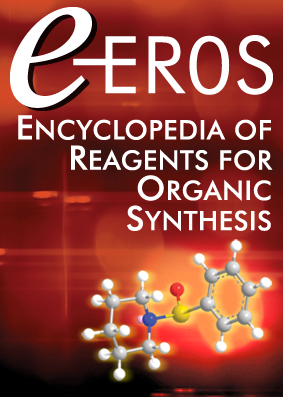Abstract
[1271-03-0] C8H10Pd (MW = 212.59 g mol−1)
InChI = 1S/C5H5.C3H5.Pd/c1-2-4-5-3-1;1-3-2;/h1-5H;3H,1-2H2;
InChIKey = TZLOZPWCNCGTQK-UHFFFAOYSA-N
(Pd(II) reagent used in allylation, benzylation, regioselective additions to olefins, alkynes, and allenes, and alkynylcyclization reactions)
Physical Data: mp = 61 °C.
Solubility: soluble in hexane, slightly soluble in toluene.
Form Supplied in: red needles.
Analysis of Reagent Purity: 1H NMR(C6D6):1δ 2.14 (d, 2H, J = 11 Hz), 3.11 (d, 2H, J = 6 Hz), 4.63 (m, 1H), 8.10 (s, 5H).
Preparative Method: addition of NaCp solution in THF (2 mmol) to a solution of Pd(allyl)Cl2 dimer (1 mmol) in THF and benzene (1:1) at −20 °C.1 After stirring for 30 min, the solvents were removed leaving a deep red paste. The paste was washed with hexane and the collected filtrate was evaporated giving CpPd(allyl) as red needles.
Purification: The initially isolated compound can be further purified by sublimation at 40 °C.1
Handling, Storage, and Precautions: CpPd(allyl) is best kept under an inert gas and stored in a freezer (−20 °C) because it decomposes gradually at open air and room temperature indicated by its noticeable color change (red to brown, then black). It sublimes easily and has an unpleasant odor.1



